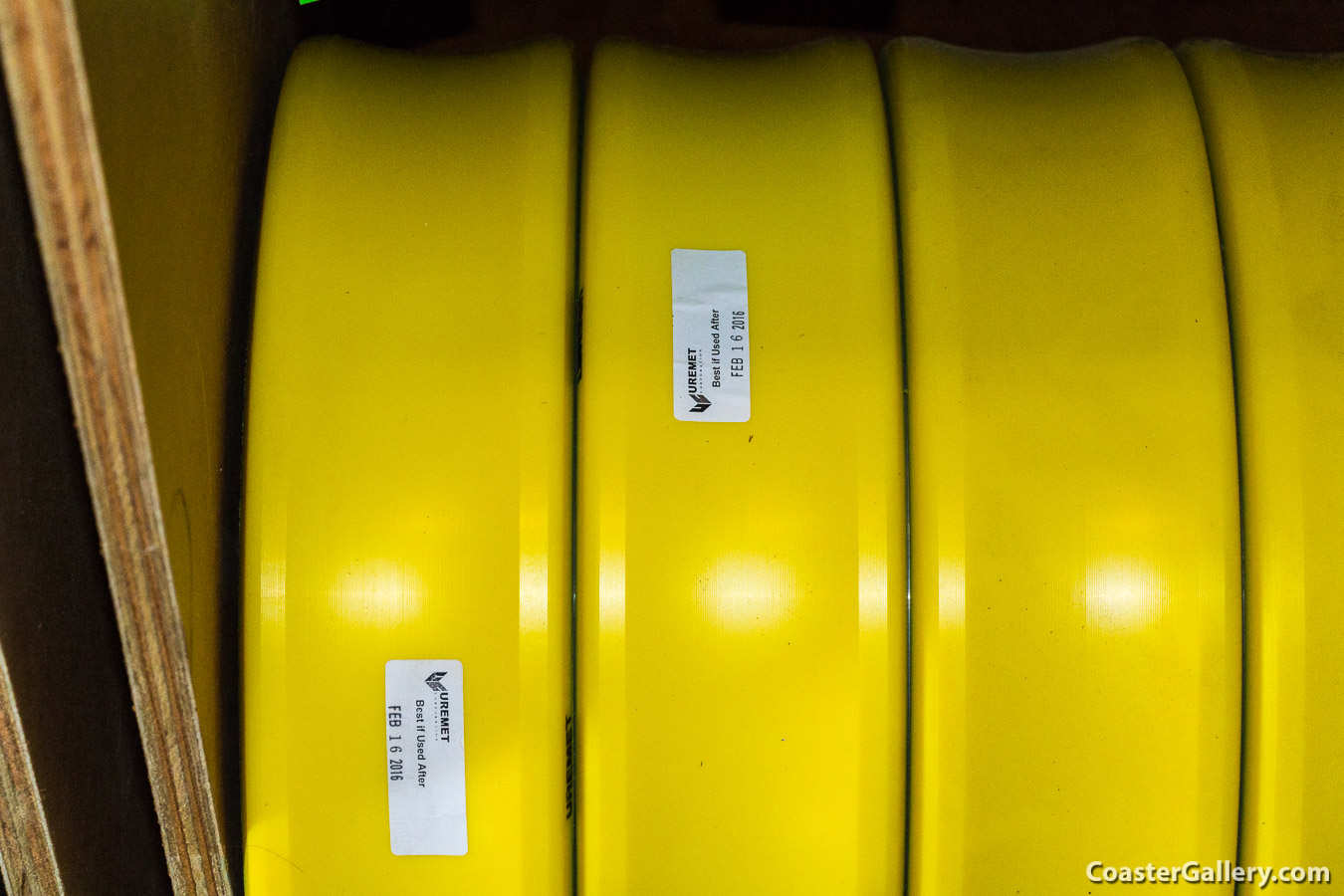
Griffon
You may be used to seeing "Best if Used Before" dates on items such as food, but read this sticker carefully! The wheels used on Griffon have a "Best if Used After" date on them! The metal core of these wheels can be re-covered with polyurethane multiple times. The polyurethane tire is bonded to the outside diameter of the metal wheel. The hardness and durability of the plastic coating changes as the polyurethane is cured, so it is best to let the new wheels "age" for a couple of months before mounting them on the ride!
Selecting the appropriate hardness of the wheel-covering material is an important decision. A nylon-covered wheel is much harder than a polyurethane-covered wheel. This firmer wheel coating has less rolling friction which allows the ride to maintain its speed better, but a softer wheel absorbs small bumps on the track and provides a more pleasant ride to guests. A heavy train pulling multiple g-forces may impose a load of over 5,000 pounds on each wheel, so the coating can't be too soft. On the other hand, the hardness of the coating material, the design of the ride, and even the weather and operating temperatures that the wheel experiences will all affect how quickly the coating wears out. The wheel's durability and maintenance costs are also factored into determining the type and hardness of wheel coverings used on a ride. It is not uncommon to see a park change the type of wheel coverings during a year, or experiment with new coatings to see how the wheels perform.
As seen by the stickers, these wheels have been conditioned by the Californian company UREMET. The old, worn tread material was removed, and new tread was bonded to the hub. The company has over 100 polyurethane chemistries to choose from and can vary the coating's material and shape based on the customer's requirements.

©2018 by Joel A. Rogers.